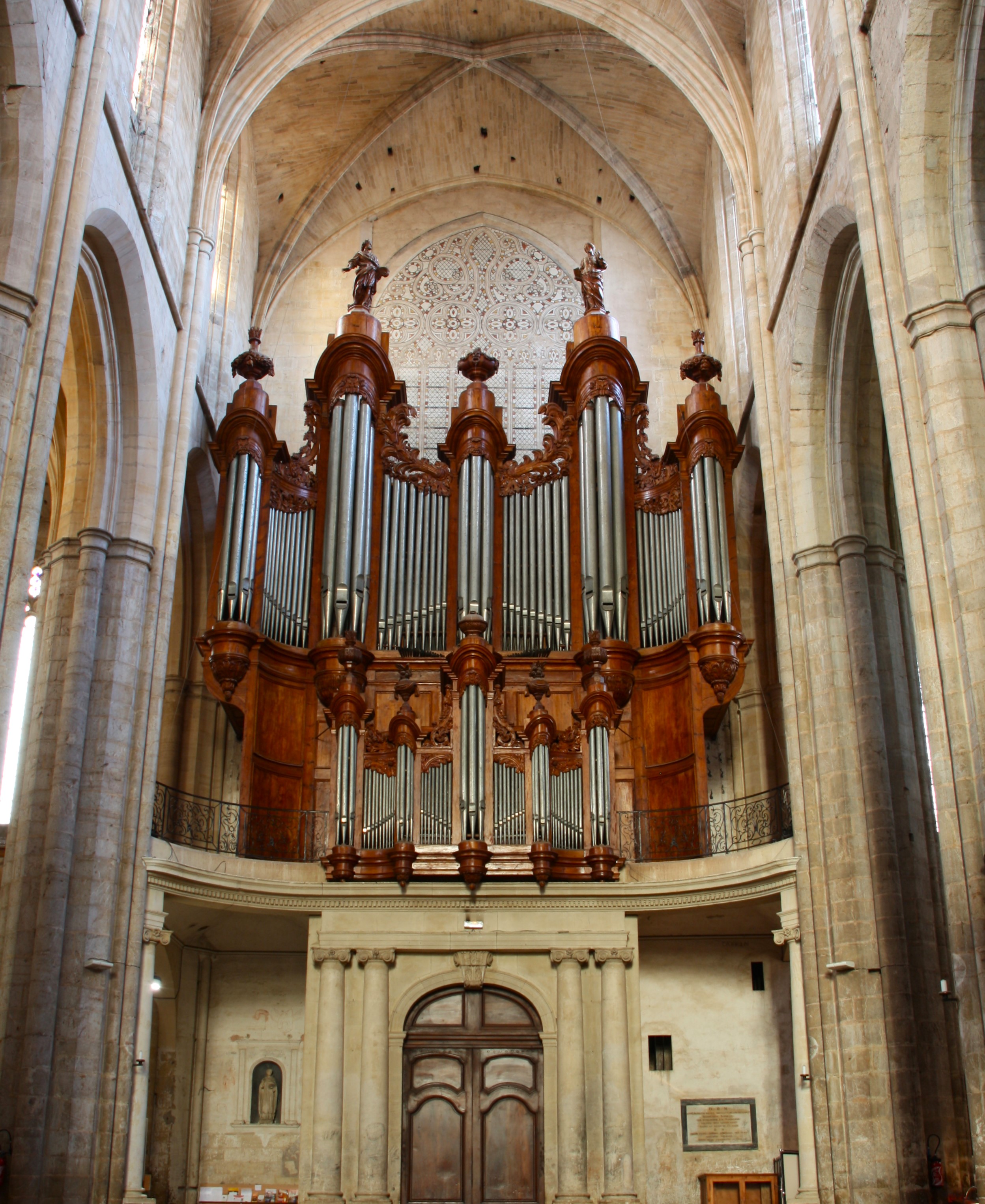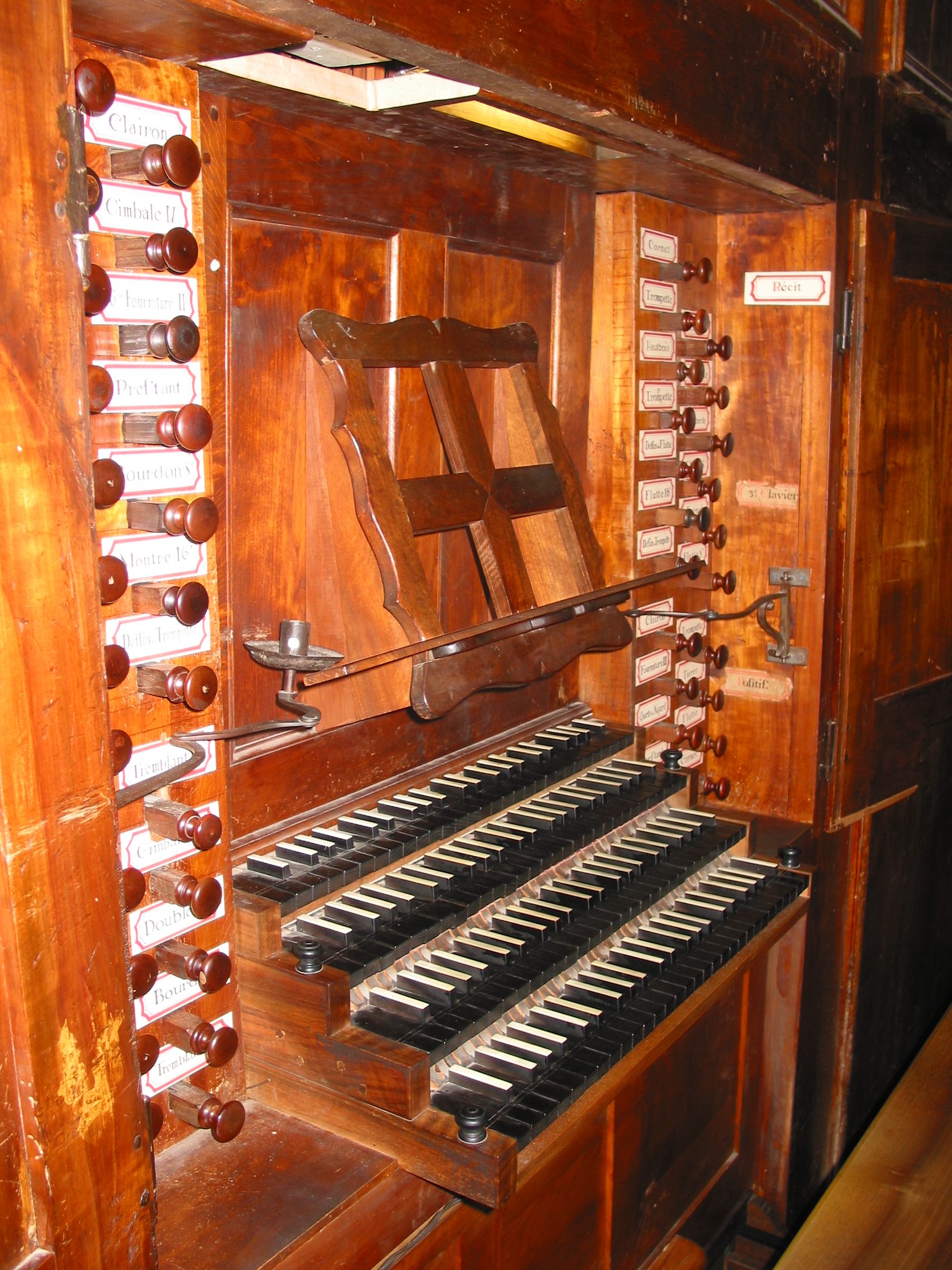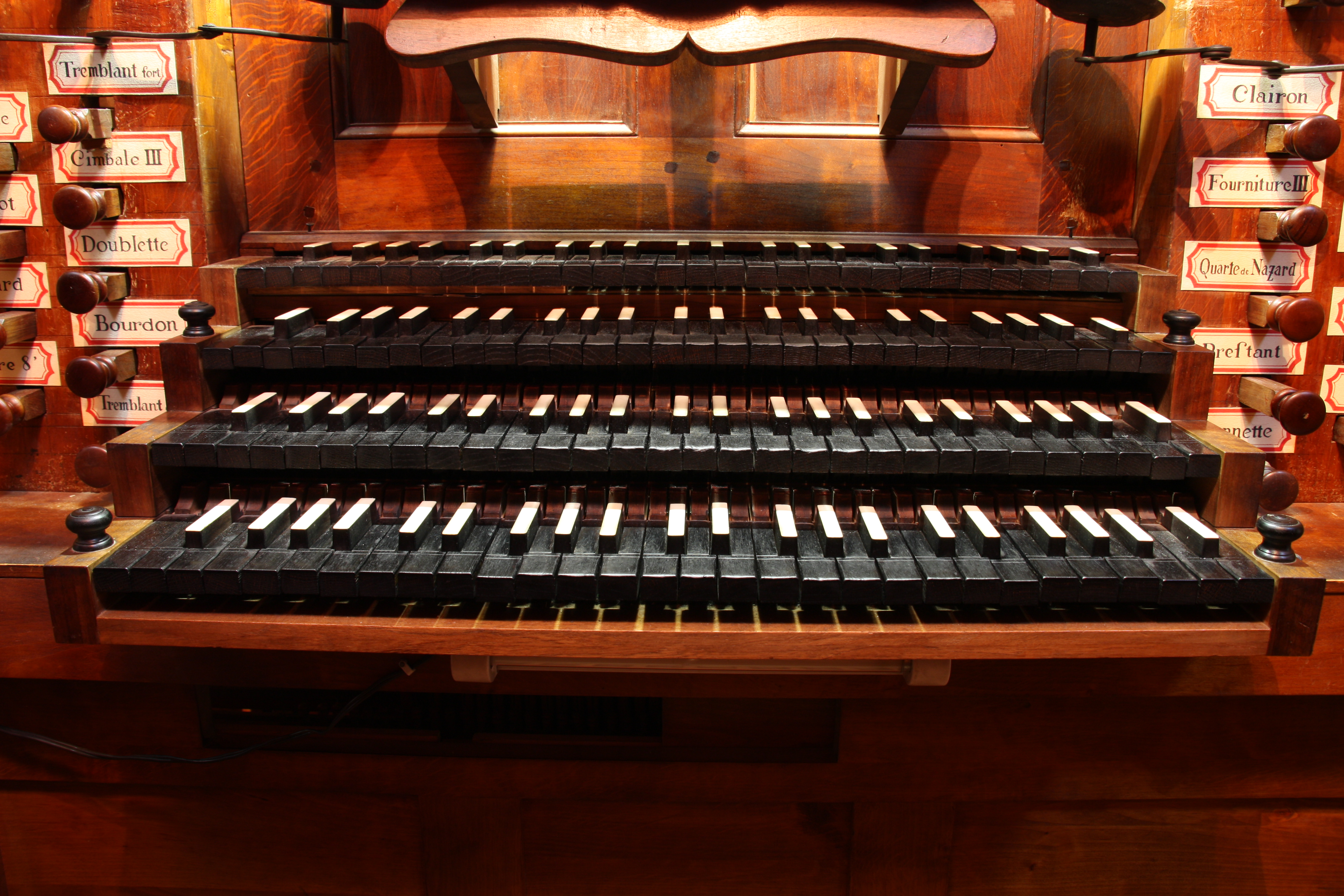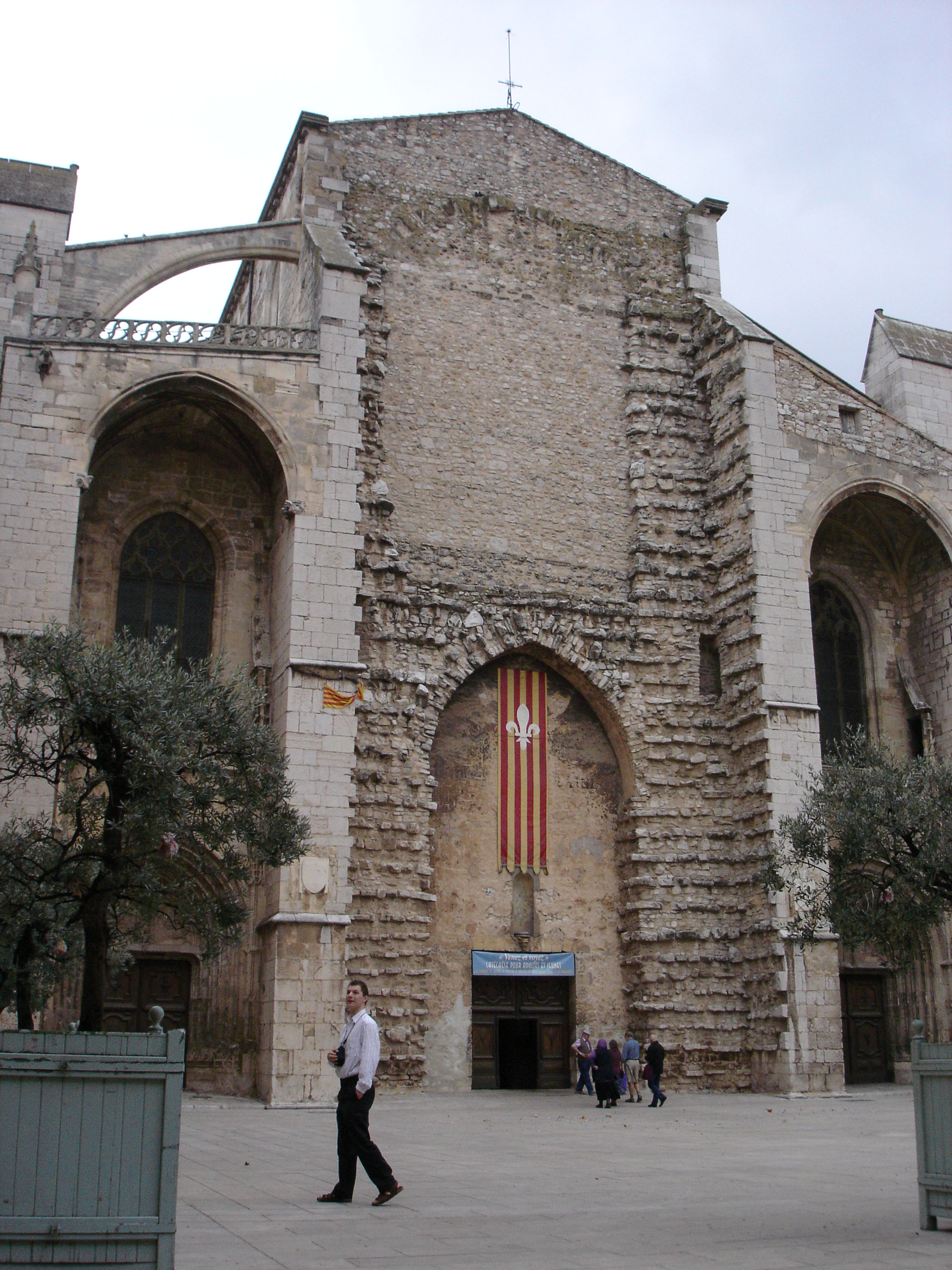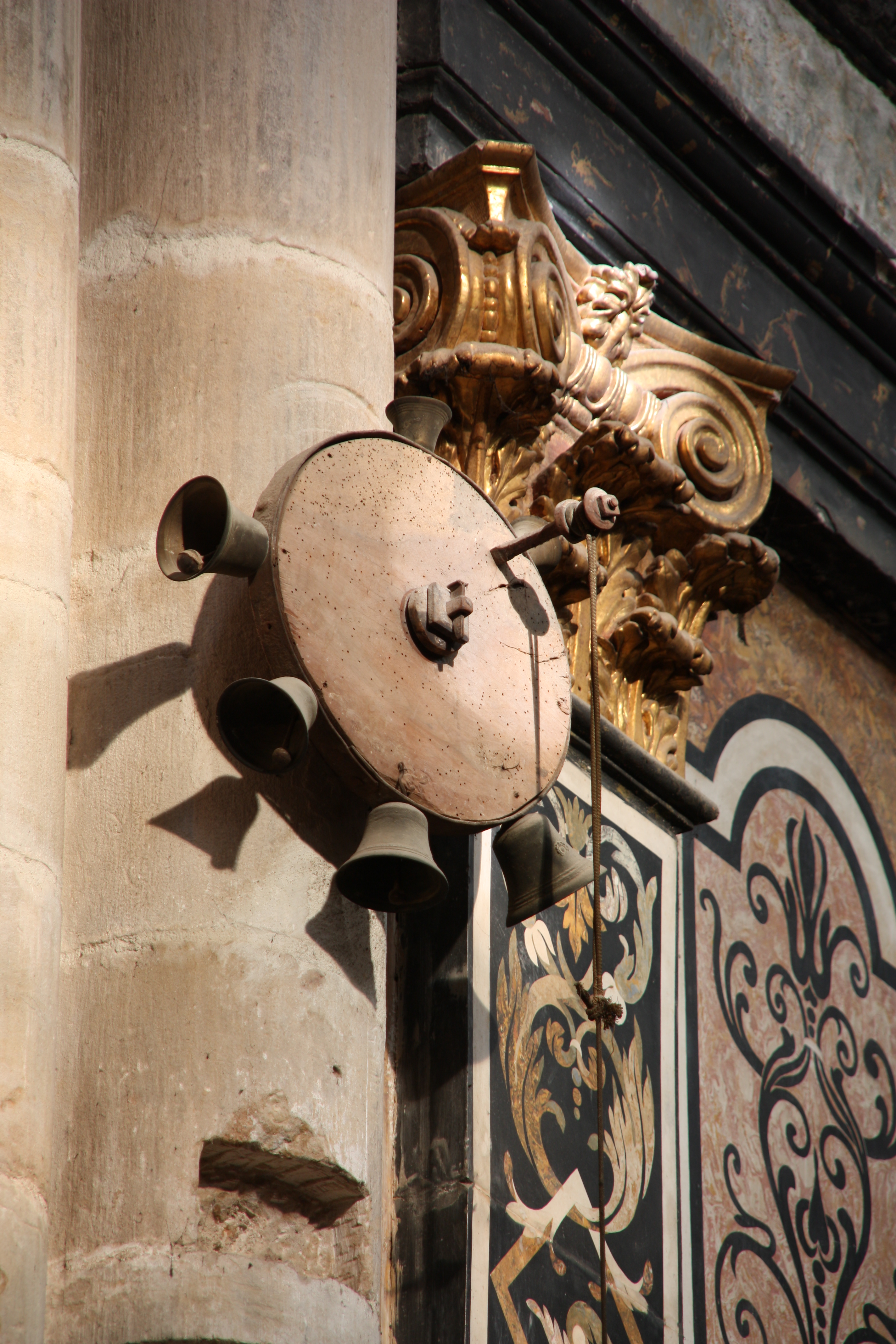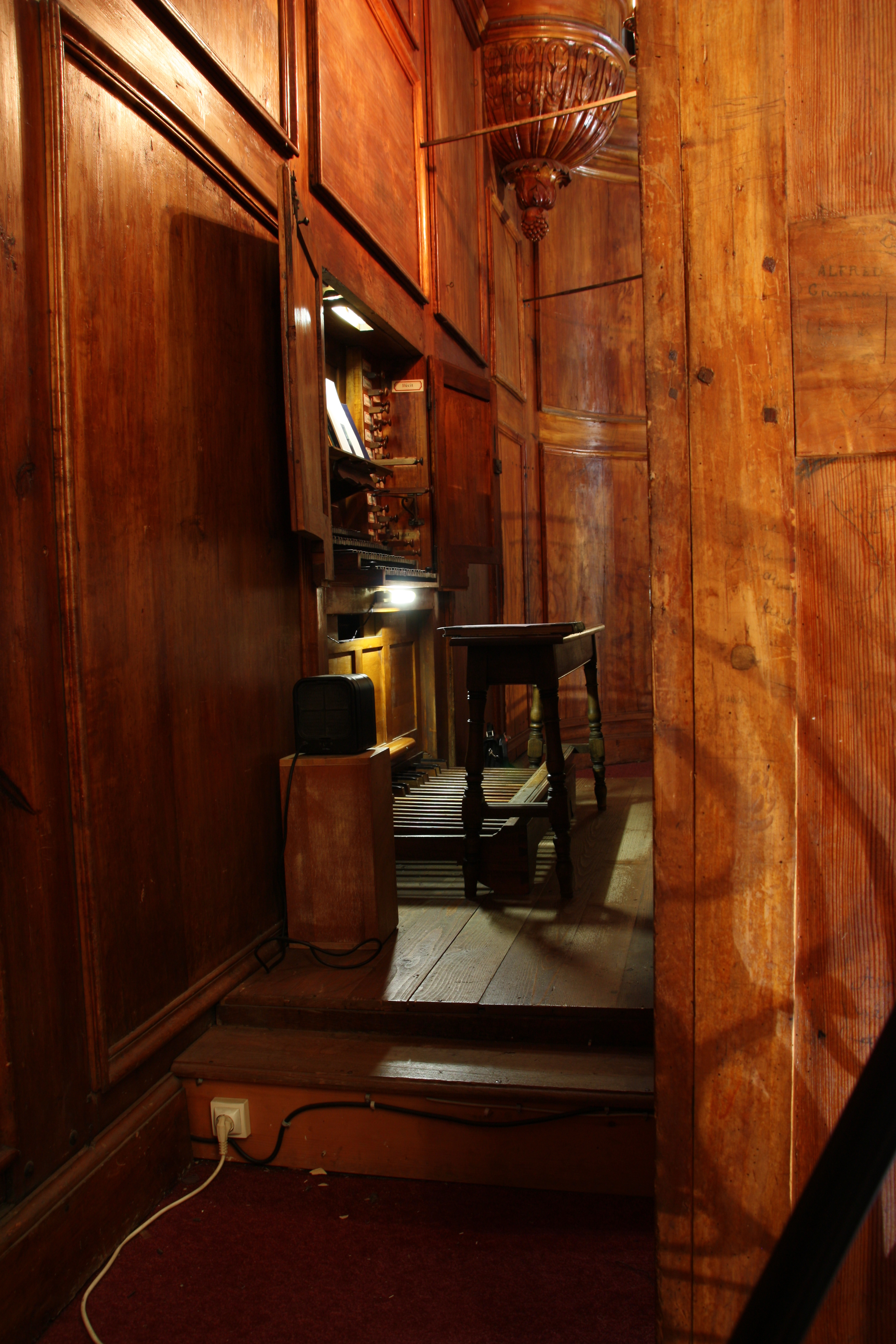Saint Maximin, Basilique Sainte-Marie-Madeleine
| Builder | J. E. Isnard |
|---|---|
| Year | 1775 |
| Period/Style | Baroque |
| Stops | 50 |
| Keyboards | 4+P |
| Keyaction | tracker/mechanical |
| Tuning | 1/5 Comma Meantone |
| Sampleset |
Available
 , sampled by
Sonus Paradisi
, sampled by
Sonus Paradisi
|
The town of Saint Maximin was the centre of early Christianity in Provence and, more broadly, in France. The monumental royal basilica was raised by Charles II d'Anjou to the honor and glory of Mary Magdalene. According to ancient and venerable tradition this lady, well known from the Gospels, came to Provence to preach the Good News, obeying the Jesus' command "Go forth and preach the Gospel to all nations...". After many fruitful years, she died and was buried where the basilica stands today - at the place where Saint Maximin, the first bishop of Aix-en-Provence raised an oratory. After the holy reliquiae of St. Mary Magdalene were found in 1279, the present basilica and the adjacent Dominican convent were constructed in 1295-1296. Her tomb became a place of pilgrimage, and the reliquary with the scull of St. Mary Magdalene can still be venerated in the crypt of the basilica today.
The basilica itself is said to be the tallest in Provence at 33 meters, and it houses many treasures and pieces of art that attest to its history. Among these is the the large and magnificent "double sixteen feet" organ built by friar Jean-Esprit Isnard and his nephew Joseph in 1772-1775. The organ is located in the western gallery above the main entrance. It is one of very few French historical organs that miraculously survived the French revolution. Legend says that when the revolutionaries came to the basilica to destroy its furniture including the organ, the organist of that time, Mr. Forcade, played the revolutionary song "Marseillaise" in front of the revolutionary authorities. It saved the organ from demolition. However, the Dominicans were expelled and the place lost its importance for some time due to the secularisation of the French republic. However, being "just another organ" in a small countryside village during the 19th century, it was fortunately saved from all the modernising tendencies of that time.
As the result, this organ remains one of the few large French instruments in which the original material made by Isnard is preserved in its entirety: 2960 pipes, except that the original wooden pipes (the bass octaves of the bourdons) are used for display only, since they were replaced with metal bourdon pipes during the last reconstruction.
The last overhaul of the organ was done in 1986-1991 by M. Yves Chabourdin.
The basilica itself is said to be the tallest in Provence at 33 meters, and it houses many treasures and pieces of art that attest to its history. Among these is the the large and magnificent "double sixteen feet" organ built by friar Jean-Esprit Isnard and his nephew Joseph in 1772-1775. The organ is located in the western gallery above the main entrance. It is one of very few French historical organs that miraculously survived the French revolution. Legend says that when the revolutionaries came to the basilica to destroy its furniture including the organ, the organist of that time, Mr. Forcade, played the revolutionary song "Marseillaise" in front of the revolutionary authorities. It saved the organ from demolition. However, the Dominicans were expelled and the place lost its importance for some time due to the secularisation of the French republic. However, being "just another organ" in a small countryside village during the 19th century, it was fortunately saved from all the modernising tendencies of that time.
As the result, this organ remains one of the few large French instruments in which the original material made by Isnard is preserved in its entirety: 2960 pipes, except that the original wooden pipes (the bass octaves of the bourdons) are used for display only, since they were replaced with metal bourdon pipes during the last reconstruction.
The last overhaul of the organ was done in 1986-1991 by M. Yves Chabourdin.
| I. Positif | II. Grand Orgue | III. Raisonnance | IV. Récit | Pedal (hard coupled to Raisonnance) |
|---|---|---|---|---|
| Montre 8' | Montre 16' | Flute 16' | Cornet V | Flute 16' |
| Bourdon 8' | Bourdon 16' | Flute 8' | Trompette 8' | Flute 8' |
| Flute 4'-8' | Montre 8' | Flute 4' | Hautbois 8' | Flute 4' |
| Prestant 4' | Bourdon 8' | Bombarde 16' | Bombarde 16' | |
| Doublette 2' | Prestant 4' | 1ere Trompette 8' | 1ere Trompette 8' | |
| Quarte de Nasard 2' | Grand Nasard 5 1/3' | 2e Trompette 8' | 2e Trompette 8' | |
| Nasard 2 2/3' | Grande Tierce 3 1/5' | Clairon 4' | Clairon 4' | |
| Tierce 1 3/5' | Dessus de Cornet V | Dessus de Flute 8' | ||
| L'Arigot 1 1/3' | Grande Fourniture II | Dessus de Trompete 8' (en chamade) | ||
| Dessus de Cornet V | Petite Fourniture IV | Dessus de Cornet V | ||
| Fourniture III | Cymbale IV | |||
| Cymbale III | Trompete 8' | |||
| Trompette 8' | Dessus de Trompete 8' (en chamade) | |||
| Cromorne 8' | Voix humaine 8' | |||
| Clairon 4' | Clairon 4' |
1655474816-2. Marchand Petite Suite
0:00
0:00
4 Basse de Cromorne Front
0:00
0:00
5 Dialogue sur les Grands Jeux Front
0:00
0:00
1 en Taille Front
0:00
0:00
https://www.sonusparadisi.cz/en/organs/france/st-maximin-france.html
 Pipe Organ Map
Pipe Organ Map